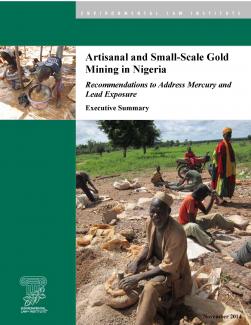In one way or another, most of us come into daily contact with a member of the family of chemicals known as PFAS—or more properly, as per- and polyfluoroalkyl substances. Largely due to their unique non-stick and grease-and-oil-resistant properties, PFAS can be found in cookware and household fire extinguishers—and also in food packaging, personal care and hygiene products, plus carpeting, candy wrappers, and paint. In addition to consumer goods, PFAS are also widely used industrially in the aerospace, automotive, construction, electronics, and military sectors.
Due to their widespread deployment across society, PFAS are ever-present in the environment—in drinking water, soil, and air. They are found in the leachate and soil surrounding landfills and disposal sites, around the production facilities that either manufacture or formulate PFAS, and at industrial sites where companies commonly used PFAS, such as metal plating and certain textile and paper mills. PFAS are detectable in drinking water sources in every state, as well as in many biosolids and residuals that leave wastewater treatment plants for land application. EPA and nongovernmental organization estimates of PFAS-contaminated sites nationwide range from 1,200 to nearly 3,000.
Of equally great concern as environmental contamination is the Center for Disease Control’s finding that PFAS have bioaccumulated in detectable levels in the blood of 97 to 99 percent of Americans. The effect of PFAS in the human body—and at various life stages—is under study, with the CDC identifying adverse health impacts that include increased cholesterol levels; decreased vaccine response in children; changes in liver enzymes; increased risk of high blood pressure or pre-eclampsia in pregnant women; small decreases in infant birth weights; and increased risk of kidney or testicular cancer. The millions of people with PFAS in their drinking water, one of the most likely pathways of exposure, are demanding response from manufacturers, water suppliers, and the government.
As with many chemicals in our society, PFAS were developed to address industrial needs, and since those needs still exist, new, generally less-persistent and less-toxic forms of PFAS chemistry are still being authorized today by EPA to enter commerce. Businesses identified this unique chemistry in the 1930s and 1940s—with PFAS taking the supply chain by storm through products like Scotchguard (1956) and Teflon (widespread by the 1960s). PFAS-containing firefighting foams were adopted by the military in the mid-1960s, with use soon to be required by other federal agencies, such as the Federal Aviation Administration.
So how many PFAS are there? The CDC estimates that over 9,000 different substances have entered commerce under that classification. Some of the most persistent forms, based on long chains of eight carbon atoms and known as C8s, were voluntarily phased out by the eight major U.S. manufacturers through an EPA stewardship program that reached its goal in 2015. The chemistry of these long chains is what made them so useful in so many consumer and industrial applications. C8s do not easily break down, which adds to product durability and effectiveness, but problematically they also do not break down in the environment. This was the trait that earned PFAS the shorthand descriptor of “forever chemicals.” While C8s are not made in the United States any longer, there are large stockpiles of C8 foams and other products throughout the nation. Alternative, shorter carbon-chain PFAS products have entered the market as a replacement. These are known as C6s and by other chemical names, and they show slightly less toxicity but continued persistence, including bioaccumulation in the environment, in fish and wildlife, and in the human body. In fact, they are so persistent that a half-life for these chemistries has yet to be determined.
PFAS are also referred to as an “emerging contaminant.” However, while our scientific understanding of how to remediate, destroy, and address PFAS due to their prevalence may be emerging, as noted, PFAS have been used for over 70 years, and approaches to mitigate their risk have been the topic of discussion and litigation for decades. For example, one of the first PFAS lawsuits was filed in 1999, Tennan v. DuPont, and EPA’s stewardship program was launched seven years later.
Digging deeper, though, there are aspects of PFAS that align with the more traditional characteristics of emerging contaminants, such as evolving toxicity and exposure data; incomplete risk assessments and confusing risk communication; lack of management tools; undeveloped analytical methods; and a seriously lagging, patchwork regulatory scheme. New toxicology information on members of the PFAS family is released almost weekly; at the same time, new analytical methods are being developed and validated. Importantly, many state and federal PFAS advisory levels are below the detection methods available to laboratories. The ability to replicate scientific testing of a particular contaminant at any laboratory is critical to allowing national assessment, verification of testing results, and even for use in liability litigation. Additionally, while the federal government is working toward developing a comprehensive regulatory framework governing PFAS, there is a lot of work still being done by states, academia, and a variety of stakeholders.
Building on the stewardship program and other EPA actions, the agency released a comprehensive PFAS Action Plan in 2018. EPA held many community forums and made some progress, particularly toward preparing testing for two PFAS family members, PFOA and PFOS, under Unregulated Contaminant Monitoring Rule V, and toward the determination needed to regulate both under the Safe Drinking Water Act. The agency finalized this regulatory determination last April, under its 2021 PFAS Roadmap. The roadmap takes a “whole of agency” approach to these chemicals, and also reaches out to the entire federal scientific and policy family in advancing comprehensive approaches. A final rule to set Maximum Contaminant Levels and Maximum Contaminant Level Goals under the SDWA was expected by late 2022.
In addition to the SDWA actions, EPA articulates other key PFAS goals in its roadmap, including: setting Effluent Limitation Guidelines and using Clean Water Act permitting authority to limit PFAS discharges from industrial sources; and designating two, PFOA and PFOS, as “hazardous substances” under the Superfund law. EPA is well on its way to advancing these goals.
Last June, the agency released four interim drinking water health advisories for PFAS. These advisories replaced the 2016 ones, lowering the safe lifetime exposure from drinking water levels of PFOA to 0.004 parts per trillion, to 0.02 parts per trillion for PFOS, and setting limits for “GenX” at 10 parts per trillion and PFBS at 2,000 parts per trillion. These numbers cannot be measured by current test methods or laboratory techniques.
Further, in September, EPA formally proposed to designate two specific PFOA and PFOS chemicals as “hazardous substances” under Section 102(a) of CERCLA—marking the first time ever that EPA would directly list a hazardous substance through the Superfund law versus taking its list of hazardous substances from other statutes—such as the Resource Conservation and Recovery Act, the Clean Air Act, or the Clean Water Act. If finalized, EPA’s rule would set a reportable quantity of one pound of PFOA or PFOS, meaning that anyone in charge of a vessel or facility who has knowledge of a release of one pound or more within a 24-hour period would be required to immediately report the release to federal, state, tribal, and local authorities. It would also allow for cost recovery and contribution actions for expenses incurred in cleaning up releases of those PFAS. Hundreds of Superfund sites across the country could be reopened to address the presence of PFOA and PFOS at them—chemicals that were never considered when many sites were declared remediated.
Indeed, companies are already being notified that their five-year closure reviews are now going to take PFOA and PFOS into account, while others are receiving CERCLA 104(e) requests for information about PFAS use at sites long complete. Many stakeholders are awaiting EPA’s final PFAS destruction guidance, which will set best practices for managing historic stockpiles of these chemicals and will be needed to manage reopened or new sites.
Other federal agencies are taking action too. Last May, the Department of Defense published a draft Military Specification on new PFAS-free firefighting foam. The draft version of the MILSPEC was released for public comment shortly thereafter. If approved, it is expected that the FAA will adopt the standard for commercial airports. Adoption of this standard would significantly reduce the continued use of PFAS-containing AFFF, aqueous film-forming foam, which is utilized for jet fuel fires—however, an accepted, fully viable substitute for the current formulations of this foam does not exist. This could send these sources into a circular process wherein they are not to use AFFF foams but real alternatives are not available.
DOD and the Department of Homeland Security are also taking action to investigate and remediate PFAS releases from their facilities. At the same time, the Department of Agriculture is working to educate farmers and growers on what PFAS presence in their groundwater or soil may mean; the Food and Drug Administration is rapidly directing a phaseout of food containers with PFAS in them; and agencies like the CDC continue to study various exposure pathways and better characterize the health effects of exposure.
In August, the White House Council on Environmental Quality released a report that encourages EPA to expand its work identifying PFAS-free products in its recommendations on federal procurement standards. The report provides further instructions for implementing Executive Order 14057, which directs federal agencies to find substitutes and have all federal procurement products PFAS-free by 2024.
Congress is exploring many of the same areas as the federal agencies and, in some cases, seeking to accelerate their actions. Both chambers are active, though their respective bills will have to be reintroduced in the new Congress. For example, the Clean Water Standards for PFAS 2.0 Act, introduced in both chambers last session, would require EPA to publish human health water criteria for each measurable PFAS and class of PFAS within three years. It also would set deadlines for EPA to publish Effluent Limitations Guidelines and standards for certain industrial point source categories pursuant to the CWA.
Other bills in various stages of activity include the PFAS Intergovernmental Coordination Act, a Senate bill that would establish a working group of federal, state, local, and tribal government representatives to coordinate a holistic response to contamination. The PFAS Firefighter Protection Act, in both chambers, would prohibit PFAS-containing firefighting foam from being used in training and action within two years and would prohibit its use at airports by October 2024. The carefully named PROTECT Act, standing for Prevent Release of Toxics Emissions, Contamination, and Transfer Act, in both chambers, would require EPA to list the entire class of PFAS as hazardous air pollutants under the CAA and would create CERCLA liability for PFAS contamination. Finally, the Senate-passed Preventing PFAS Runoff at Airports Act would raise the federal cost share for PFAS testing at airports.
The Infrastructure Investment and Jobs Act, signed in 2021, contains $10 billion to address PFAS contamination in drinking water, while the National Defense Authorization Act for fiscal 2022 contains PFAS provisions that are focused on the Department of Defense. The fiscal 2023 NDAA, when passed, is expected to contain additional PFAS provisions.
It is extremely common that when federal regulation lags, states step into the gap if their residents are at risk. And step into this gap they have indeed. For example, according to the National Conference of State Legislatures, in 2021 states considered 196 bills related to PFAS. Many states are setting soil and groundwater cleanup standards, consumer product phaseouts, and taking other actions that are well ahead of the federal government.
While EPA works on its drinking water contaminant levels and goals, according to the nonprofit Safer States, 12 states—Alaska, California, Connecticut, Hawaii, Massachusetts, Michigan, Minnesota, New Hampshire, New Jersey, New York, Oregon, Vermont—have set action levels for where PFAS in public drinking water exceed permissible state levels. Four states—Delaware, New Hampshire, Rhode Island, and Wisconsin—are codifying state Maximum Contaminant Levels. Seven states—Maine, Massachusetts, Michigan, New Hampshire, New Jersey, New York, and Vermont—have enforceable MCLs for PFAS. The use of certain PFAS-containing firefighting foams in training and testing is banned in Colorado, Georgia, Illinois, Indiana, Washington, and Wisconsin.
Some states have passed regulations requiring studies and monitoring of PFAS bioaccumulation. Florida, Hawaii, and South Carolina passed regulations monitoring PFAS bioaccumulation in fish. Michigan, Montana, Tennessee, and Utah implemented their own state action plans to better grasp the impact of PFAS on their water and soil. These action plans involve steps like computer mapping of contaminated sites, expanding monitoring efforts for known PFAS sources, and community outreach to educate the public about potential exposure.
Some states have taken the added step of creating specific PFAS remediation and mitigation procedures. For example, the Vermont legislature codified Act 55, which requires parties that contaminate groundwater with PFAS to connect affected residents to a clean municipal water supply; Michigan created a PFAS Action Response Team, which works with federal and local partners to rapidly remediate contaminated sites; and Colorado and New Hampshire created grant programs to support PFAS remediation efforts.
States are also branching out from more traditional approaches to addressing PFAS issues. For example, Maine recently became the first state to prohibit the land application of biosolids and the sale of compost or similar products containing sludge and septage due to PFAS concerns. Under An Act to Prohibit the Contamination of Clean Soils With So-Called Forever Chemicals, biosolids can only be applied to land if they can be shown to be essentially PFAS-free. The result is that for the foreseeable future, some Maine wastewater utilities are exporting their biosolids to Canada while others are landfilling at high cost; the sustainability of both is questionable. Massachusetts proposed a bill establishing a moratorium on procuring new structures that generate PFAS emissions or modifying existing uses or structures that may generate PFAS. If ever passed, the bill would effectively halt the construction of new sewage sludge incinerators or improvements for existing incinerators. Other states have adopted programs for PFAS testing before biosolids can be land applied and are using a variety of approaches to determine what is “safe”—most of which are derived from a combination of scientific studies and policy choices.
In 2018, California became the first state to target the phasing out of PFAS used for stain resistance from carpets and rugs. Final regulations effective in 2021 list rugs and carpets containing PFAS as Priority Products under the state’s Safer Consumer Products Program. Under the regulation, domestic and foreign manufacturers whose rugs and carpets contain PFAS are required to submit a Priority Product Notification and thereafter are required to submit to the state a chemical removal notification, a product removal notification, a product-chemical replacement notification, a preliminary alternatives analysis report, or satisfy other similar reporting obligations. And Washington state, having issued two reports finding that ample alternatives exist, has embarked on a two-year process to ban PFAS-containing food packaging.
A hallmark of a patchwork and evolving domestic regulatory structure for a chemical is that litigation will fill the gap for redress much like state legislation does. Indeed, in the past few decades there have been thousands of state and federal lawsuits filed against PFAS manufacturers, PFAS users, and even municipalities. A recent litigation survey revealed that of 60 reviewed cases, 42 were brought in or removed to federal court, while 18 were pursued in state court. Of these sampled cases, plaintiff groups fell into three primary categories: state and local governments; individual and class-action suits; and private water utilities.
These cases show that the plaintiffs are primarily looking to common law for relief. (This is unsurprising given the current absence of environmental statutory language providing causes of action against PFAS manufacturers and users.) Among the claims, nuisance was the most common, followed by trespass and product liability—citing a failure to warn or a defective design. Meanwhile, state and local governments primarily sought to recover response costs for remediation efforts; individuals and class action plaintiffs sought damages for personal injury and property damage and ongoing health monitoring; and private water utilities, much as did the states, sought to recover response costs from PFAS manufacturers associated with needed remediation.
States and localities across the country are also bringing suit against PFAS manufacturers and users. These suits often are rooted in common-law product liability theories or allege consumer fraud or misrepresentation and generally seek to recover costs related to remediation, restoration of damaged infrastructure and natural resources, or long-term monitoring. Several states—including Alaska, Delaware, Michigan, Minnesota, New Hampshire, New Jersey, New York, Ohio, and Vermont—are also pursuing natural resource damage claims. While many of these state cases remain pending, noteworthy settlements include a Minnesota agreement in 2018 with 3M for $850 million and a 2021 Delaware settlement with DuPont, Chemours, and Corteva for $50 million—the latter subject to escalation as legal precedent grows. States are retaining private firms to bring PFAS litigation on their behalf, for natural resource damages, some even on contingency. This reflects the limited resources of states to pursue the volume of PFAS cases before them, and the need for creative approaches to recover damages caused by PFAS manufacture and use.
So many cases have been brought against manufacturers or formulators of AFFF, aqueous film-forming foam, used for fire-fighting and which contains PFAS, by water utilities and other users for contamination of surface and groundwater, that the suits are being moved into a massive multi-district litigation based in the federal court in South Carolina. This MDL was consolidated by a federal judge in 2018 and in fall 2022 included over 3,019 cases. The 12,000-plus plaintiffs—individuals, local governments, states, tribes, water districts, airports, companies, and colleges—allege harm from AFFF contamination and exposure. Defendants (nearly 200 of them) span the supply chain (i.e., manufacturers of AFFF and its component chemicals and distributors) and also include AFFF users, including the Air Force, Army, and Navy.
These cases all generally allege that AFFF containing certain PFAS contaminated groundwater near military bases, airports, and other industrial sites where the foam was used to extinguish liquid fuel fires. And while the specific causes of actions vary, they generally fall into the following categories: claims for property damage asserted by water providers; claims for property damage asserted by property owners; bodily injury claims; and claims for medical monitoring for potential future injury. In September, the court designated City of Stuart v. 3M Company, et al. as the lead case for the bellwether trial and set the start date for this coming June. This first case will allow the parties’ executive committees to test legal theories in a trial setting, discern potential trends, gauge the potential success of future trials, and possibly foster settlements.
Plaintiff groups are also increasingly pursuing class action lawsuits for PFAS in products, alleging false and misleading labeling claims against companies whose products allegedly contain PFAS, and suits against PFAS manufacturers alleging that they knowingly distributed PFAS for decades despite concerns that they were likely associated with a wide variety of serious health risks. One such example of the former category is& Brown v. Cover Girl Cosmetics, wherein plaintiffs allege that the makeup manufacturer’s representation that its products are safe and appropriate for use on consumers’ eyelashes is misleading and fraudulently advertised because the products contain PFAS. An example of the latter category is Hardwick v. 3M Company, which involves a putative class of roughly 11.8 million Ohio residents with a blood concentration of 0.5 parts per trillion of any PFAS, which is currently against PFAS manufacturers but could draw in others if it progresses.
As is typically the case when an entire industry finds itself in the cross-hairs of new regulations and massive litigation exposure, an entire ecosystem around PFAS has blossomed into existence. Not only are law firms and private consultants directly representing corporations in lawsuits, they are also working with companies proactively to identify possible historic uses of PFAS and to identify potential insurance coverage for PFAS-related litigation and judgments. Scientists and toxicologists continue to refine what we know about PFAS contamination and its effects on the human body. And companies and researchers alike are pouring massive resources into identifying viable PFAS alternatives in anticipation of sweeping regulations that may direct them to do so.
PFAS are understandably on the minds of many. From chemical manufacturers, to regulators, to scientists, to lawyers, to everyday citizens who see PFAS in the news and worry about the health and safety of their families. There are environmental justice issues associated with these chemicals, and it will be worthy to watch how EPA’s newly formed Office of Environmental Justice and External Civil Rights takes up the PFAS issue.
It is conceivable that PFAS may one day be regulated and litigated out of use. It is also conceivable that science could someday advance to the point of being able to break down and eliminate these wildly persistent chemicals. Modern medicine may even develop to the point that it can counteract the known (and unknown) effects of PFAS exposure, aiding people already impacted.
But for now, much remains unclear. What we do know is that states and private parties will continue to flood the legal system with lawsuits against PFAS manufacturers and users. We also know that the science will continue to develop and that state and federal governments will continue to increasingly monitor and regulate PFAS. What’s more, as state and federal environmental structures evolve to provide clearer recourse against PFAS manufacturers and users, we will almost certainly see much more enforcement activity.
There is certainly more to come, and as this piece shows, there are more than enough opportunities for environmental lawyers, policymakers, scientists, legislators, jurists, and thought leaders to contribute to solving the “everywhere chemicals” challenge. TEF
The author wishes to thank Jeff Wettengel and Cameron Hughes for their assistance with this article.








